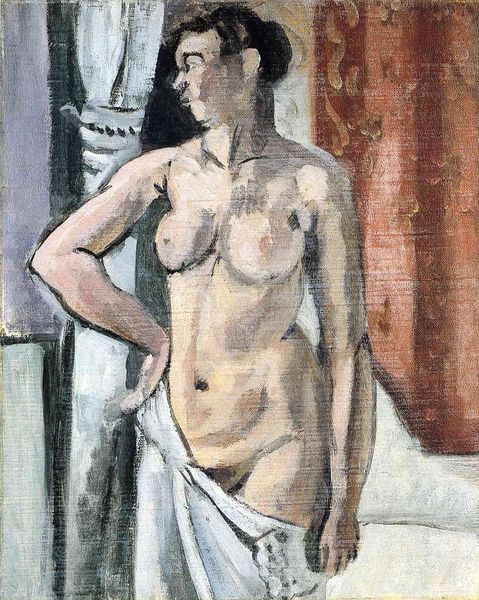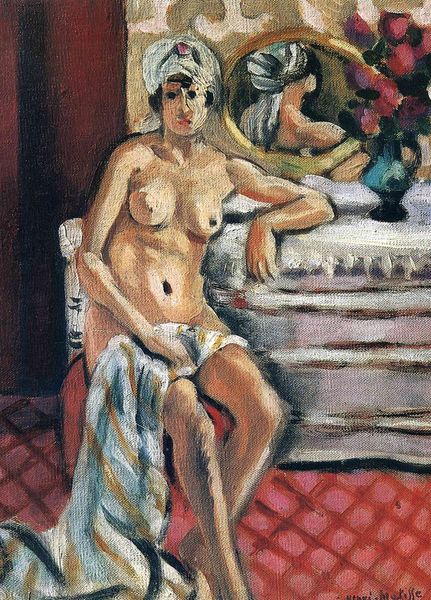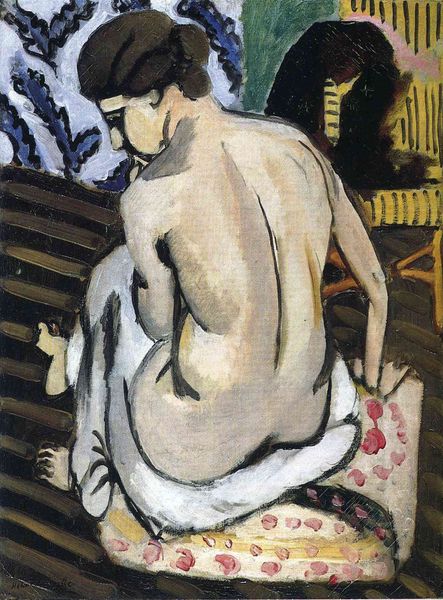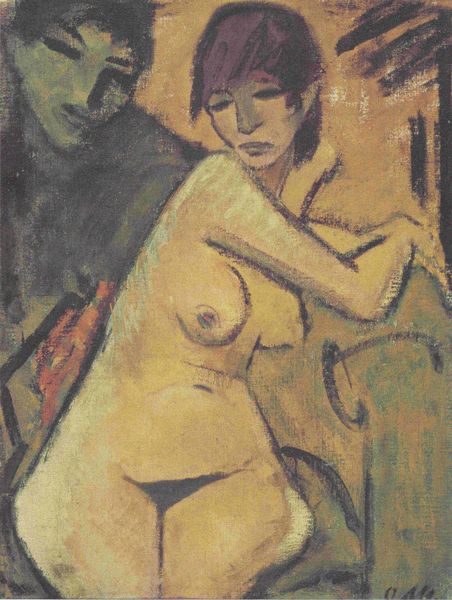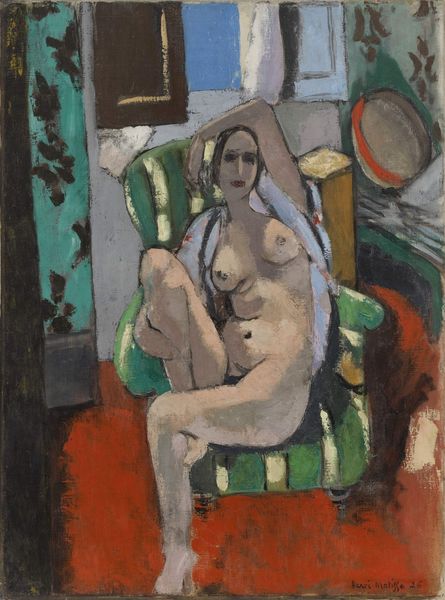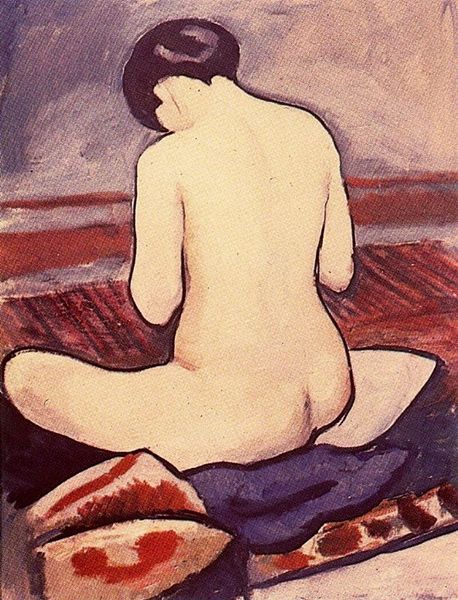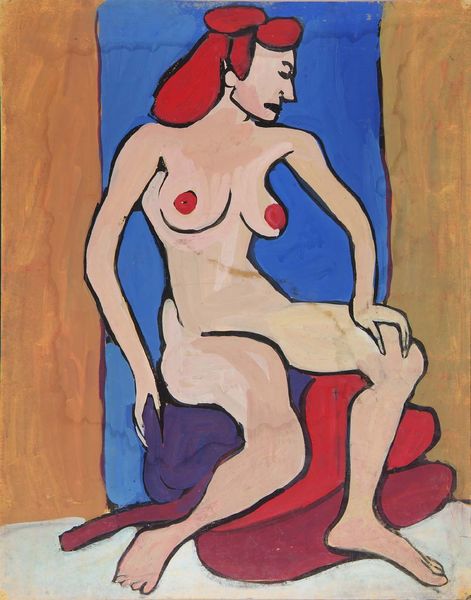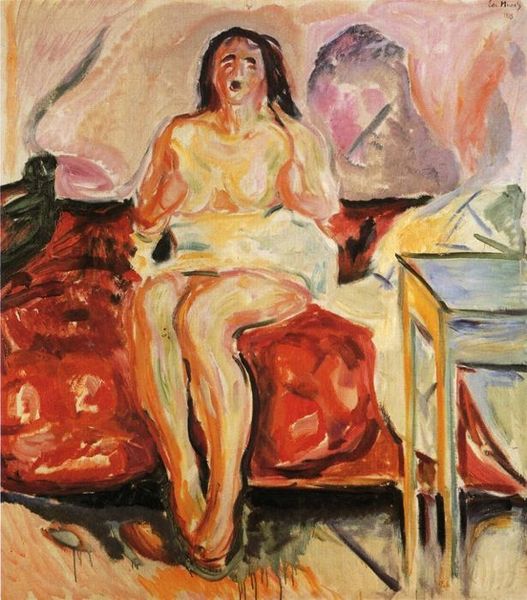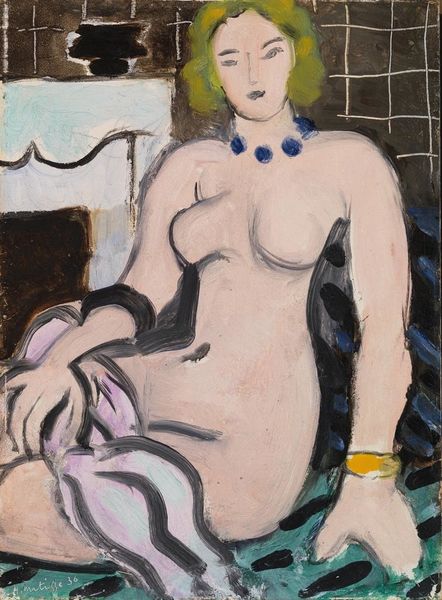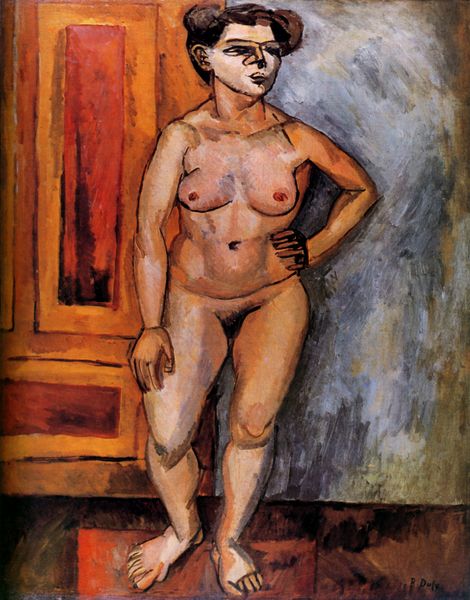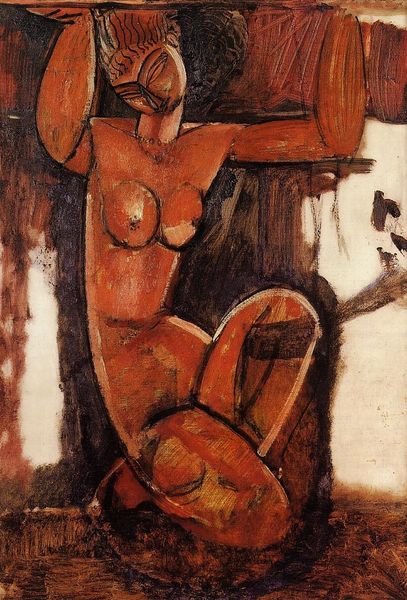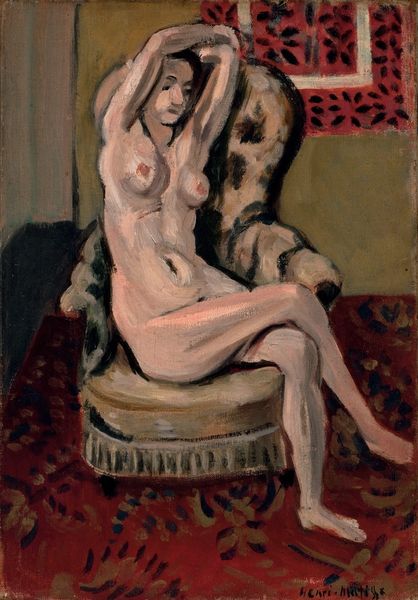
Copyright: Public domain US
Curator: Henri Matisse’s "Nude, Spanish Carpet," completed in 1919, offers a fascinating study in the arrangement of form and color. He deploys oil paint here to investigate an interior scene with a nude female figure. What's your initial response to this artwork? Editor: Immediately, I’m drawn to the faceless figure, a powerful symbol, paradoxically highlighting vulnerability and universality. She could be anyone, any woman throughout history, yet feels exposed and anonymous. Curator: Indeed. Note the deliberate simplification of form; the geometric shapes of the carpet play against the curving lines of the figure, creating a dynamic tension. The cool blues of the window juxtapose beautifully with the warm ochres of the carpet and the flesh tones, constructing a balanced visual harmony. Editor: The carpet, in particular, functions symbolically, a cultural artifact implying domesticity and perhaps even imprisonment, considering the woman's confinement within the interior space. The traditional patterns evoke a sense of history and constraint. Curator: From a formal perspective, consider how Matisse utilizes the planes of color to create depth and spatial relationships. The flattened perspective is consistent with his engagement with modernist ideas concerning painting as an object, not a window. Editor: Yes, and I also interpret those planes as psychological barriers. The absence of the woman’s face emphasizes the gaze directed upon her, raising questions about the objectification of women in art, and who is doing the watching, artist or viewer? Curator: The artist’s touch is clearly visible. You can examine the brushstrokes closely, appreciating the surface quality of the paint itself. Matisse’s materiality reveals much about his creative process, as seen through expressive handling. Editor: Ultimately, the painting is a confluence of symbol and form. The tension between the cultural markers of the carpet and the vulnerability of the figure offers enduring narratives, raising concerns of representation, interiority, and objectification. Curator: Exactly. In exploring how visual elements converge, this piece gives us great insights into Matisse's pictorial project and his experimentation with composition. Editor: And by understanding the embedded symbols, we understand the cultural weight an image like this continues to carry.
Comments
No comments
Be the first to comment and join the conversation on the ultimate creative platform.
